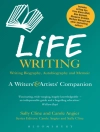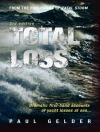Sensational trials like those of Homolka-Bernardo and O.J. Simpson are not unique to the age of television. Even more dramatic was one that occurred in 1900, described at the time as `one of the most remarkable trials in all history.”
When William Marsh Rice, founder of Rice University, was found dead in his New York City quarters, suspicion immediately fell on a young lawyer, Albert Patrick. Apparently Rice had been murdered by chloroform poisoning and his will had been forged to give Patrick his vast estate. Patrick was immediately arrested and tried for first-degree murder, a crime then punishable by electrocution.
In fact, the case was not quite so straightforward. Martin Friedland skilfully recounts the trial and the events leading up to it, the various appeals, and the eventual outcome. He sheds new light – and casts doubt – on a seemingly ironclad case.
The Death of Old Man Rice is more than a gripping tale of murder and intrigue. Its elements resonate today: the influence of the popular press, the purchase of expert witnesses, the problems of multiple appeals, the inadequacy of penal institutions, the issue of the death penalty, and the advantage of wealth. Friedland combines a high suspense tale with scholarship in his trademark `who done it” style.
Over sixty photographs and illustrations, including many courtroom drawings and examples of evidence, capture the circumstances of the trial and the mood of New York City at the turn of the century. The Death of Old Man Rice is a murder mystery and murder history, a glimpse into the world of forensic science, and that rare book that can engage any reader.












